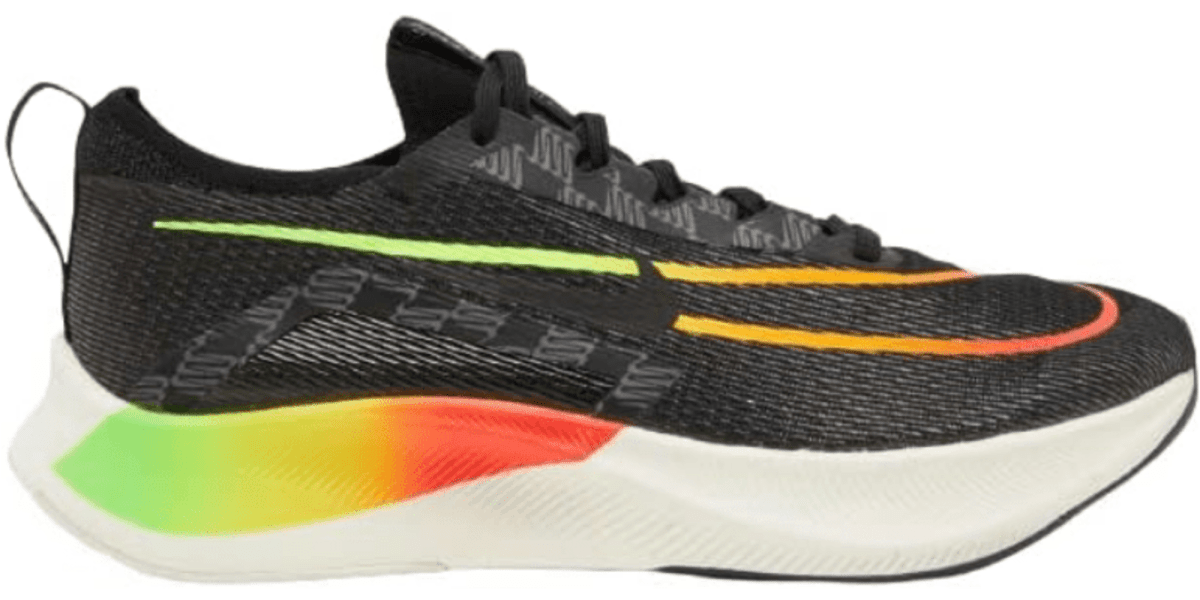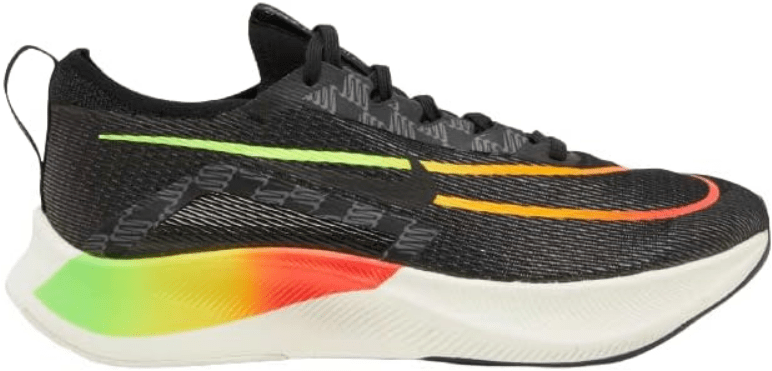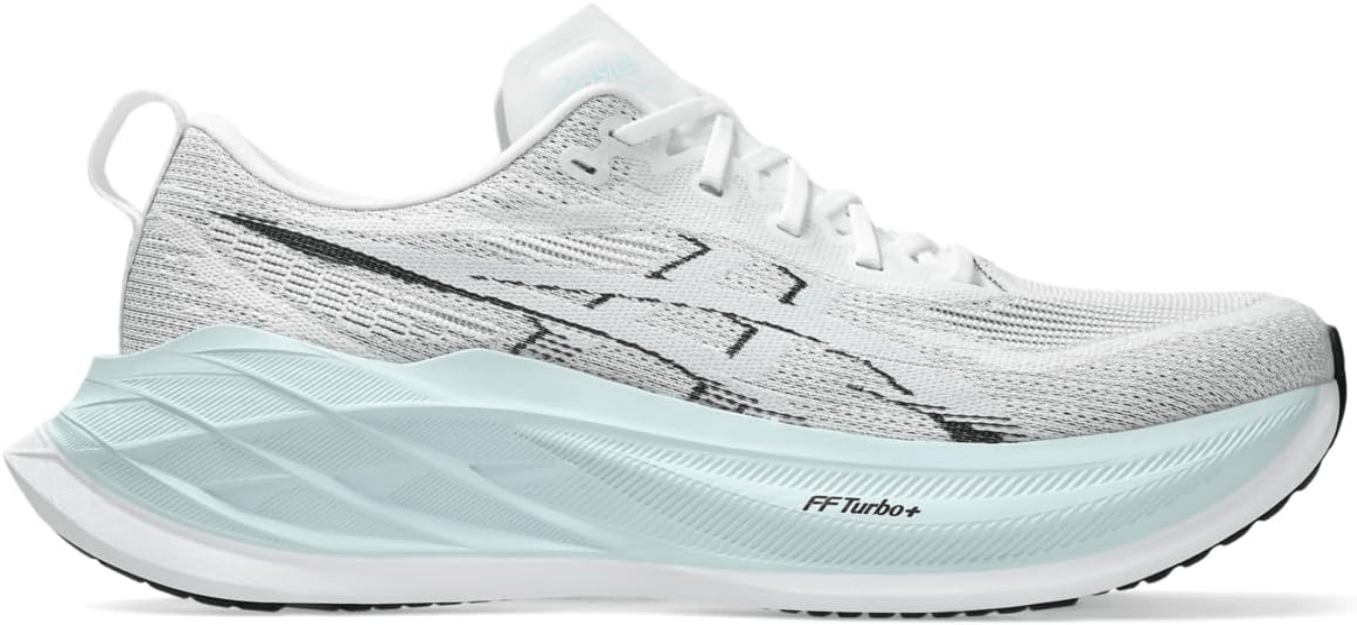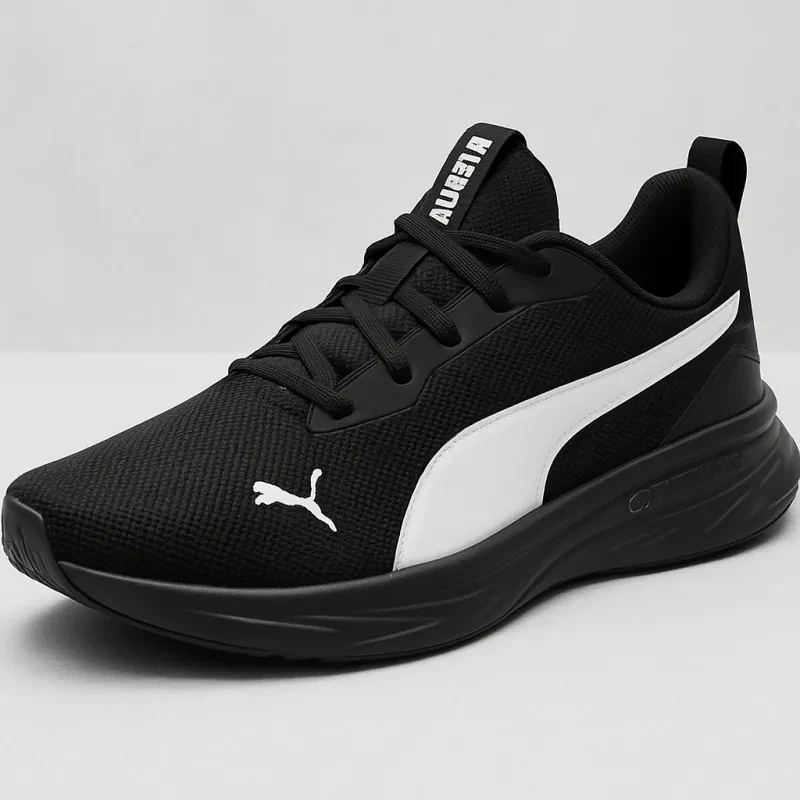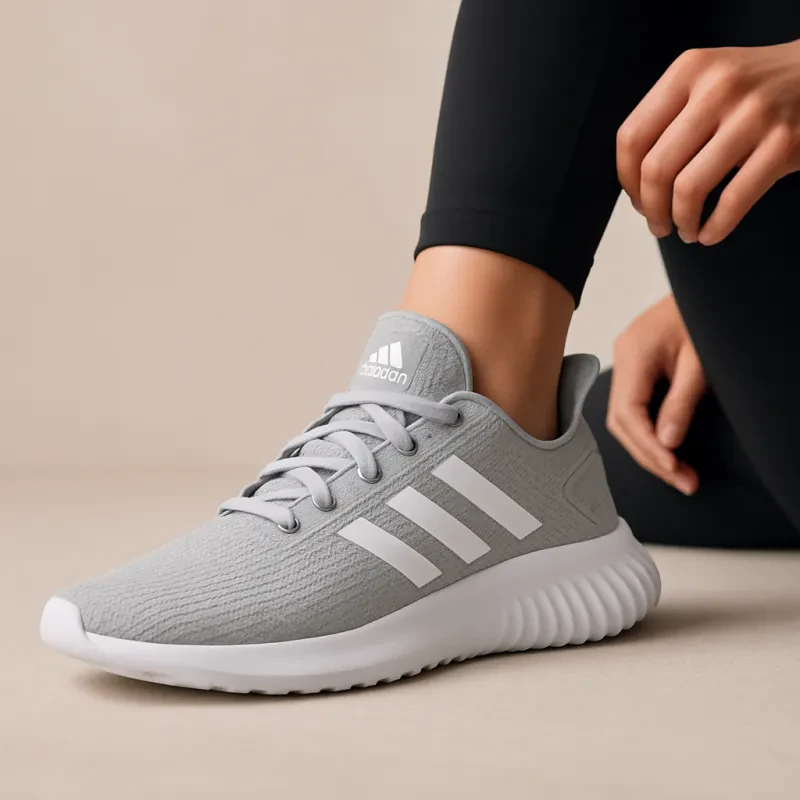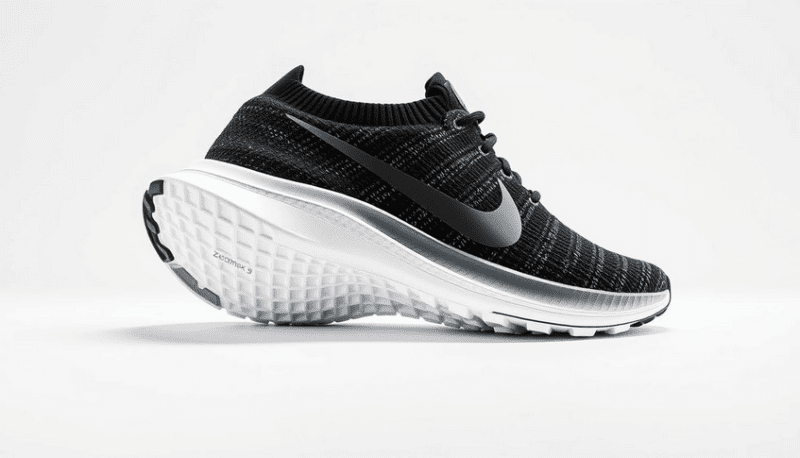Best Shoes For Overweight Runners

Finding the right running shoes can be a real challenge for heavier runners. Durability and support often top their list of needs. This article is packed with insights into selecting shoes that offer maximum comfort and longevity, tailored for those carrying extra weight.
Dive in to discover your perfect fit!
Key Takeaways
- Overweight runners should look for shoes with a wide and supportive base, ample cushioning, and good durability.
- Brands like Brooks, Saucony, Nike, and Asics make running shoes that cater specifically to the needs of heavy runners.
- Shoes that absorb shock well can protect joints from high impact during runs. Features like gel technology or thick midsoles help.
- Stability is key for larger runners. Choose stability running shoes to prevent overpronation and keep proper foot alignment.
- Regularly replacing your running shoes every 300-500 miles or every 6-8 months ensures continuous support and cushioning.
Key Considerations when Choosing Shoes for Overweight Runners

When selecting the perfect pair of shoes, overweight runners need to zero in on specifics that streamline their performance and safeguard their joints. It's about pinpointing those non-negotiable features that promise a blend of comfort and lasting reliability—because every step counts.
Wide and Supportive Platform
Choosing shoes with a wide and supportive platform is crucial for overweight runners. A broad base helps in evenly distributing weight, which can reduce stress on the feet. It also aids in stability, preventing rolling motions that could lead to injuries.
Shoes designed for heavy runners often have reinforced structures around the midsole and heel areas to offer extra support.
Look for features like a sturdy heel counter, which keeps your foot locked in place while you run. This will help control pronation and keep your stride steady. Plus-size running shoes are specially made to handle more weight without compromising comfort or performance.
They ensure your feet have enough room, particularly if you have wider feet or need orthopedic running shoes with custom inserts. Make sure not to overlook these important aspects of shoe design—they're key to keeping you moving securely and comfortably!
Appropriate Cushioning
Finding shoes with the right cushioning is like hitting a comfort jackpot for overweight runners. Good cushioned running shoes soak up the hard hits your feet take with each step. Think of them as shock absorbers for your legs.
They help keep your joints happy, reducing stress on knees and hips.
Max-cushioning technology in sneakers brings serious impact protection. It's not just about softness; it's about keeping that spring in your stride without weighing you down. A plush midsole can make long runs feel shorter, letting you go the distance with less fatigue.
Look for gel cushioning or thick-sole running shoes known for their bounce-back qualities to get both comfort and energy return on the move.
Durability and Brand Reputation
Good shoes last longer. That's why durability is key for overweight runners who need strong support and structure in their footwear. Brands with solid reputations build shoes that can take a lot of wear and tear.
They use tough materials and advanced shoe technology to make sure the sneakers hold up mile after mile.
Trustworthy brands also stand behind their running shoes with good customer service and guarantees. This shows they believe in their product's ability to meet runner needs over time.
Heavy runners should look for maximum cushioning technology, gel cushioning shoes, or dual-density midsole options that offer lasting comfort and protection on every run.
Brooks Glycerin 20: Best for Supportive Comfort
When comfort meets support, the Brooks Glycerin 20 emerges as a standout; it's designed with the perfect blend to keep your runs smooth and supportive. This shoe is all about embracing heavyweight runners with a warm hug of cushioning that doesn't compromise on stability.
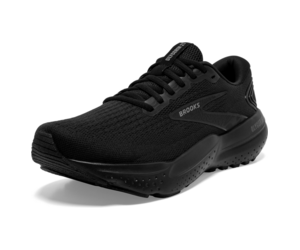
Features & Description (Brooks Glycerin 20)
The Brooks Glycerin 20 stands out with its plush cushioning, perfect for overweight runners needing extra support. This shoe packs a soft yet responsive feel underfoot, thanks to its DNA LOFT v3 technology.
It's designed to soften each step while providing a powerful rebound. The upper has a breathable mesh that adapts to your foot's shape, keeping you cool and comfortable on long runs.
A roomy toe box in the Glycerin 20 gives your feet space to spread out naturally. The shoe also features an OrthoLite sockliner for additional comfort and moisture management. Its strong rubber outsole grips well on various surfaces, boosting confidence with every stride.
Moving on from superior comfort, let's explore how it fares in everyday training situations with the Saucony Ride 16 next.
Pros & Cons (Brooks Glycerin 20)
When considering the Brooks Glycerin 20 for the overweight runner, the advantages and disadvantages of the shoe become quite significant for ensuring a comfortable and supportive run. Let's break it down.
| Pros | Cons |
|---|---|
| Exceptional cushioning for high-impact protection | May be on the higher price spectrum |
| Enhanced support for added stability | Potential for less breathability due to plush padding |
| Ideal for long-distance running | Some runners might find them too bulky |
| Durable outsole for extended wear | Heavier than some other models, which could affect speed |
| Spacious toe box accommodating wider feet | Styles and color options may be limited |
Moving on, let's explore the Saucony Ride 16, another exceptional choice for daily training needs.
See Special Pricing
-------------------------------------------------------------------------------------------------------------------------------------
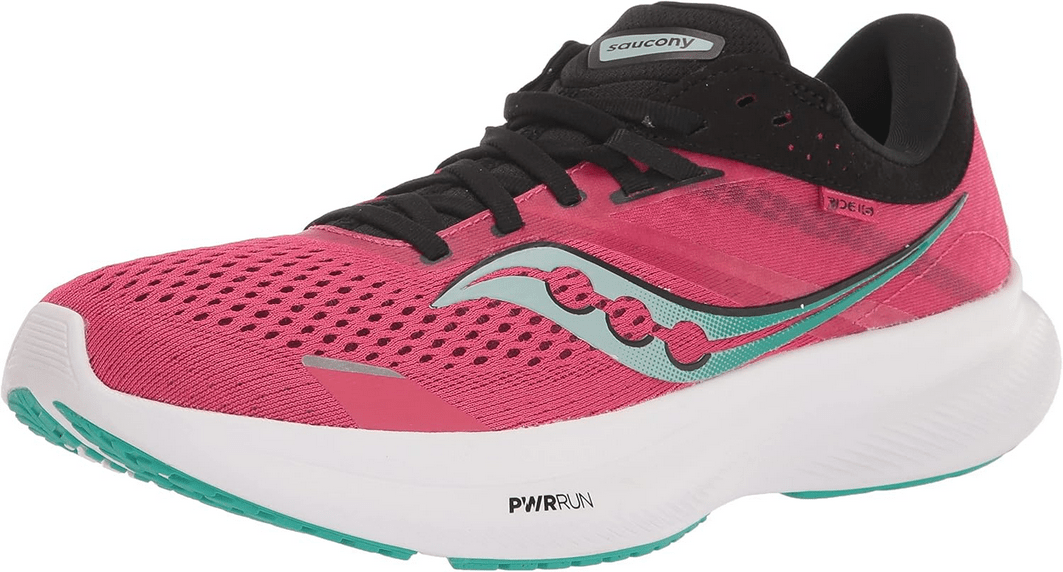
Saucony Ride 16: Best Daily Trainer
For those who hit the pavement regularly, the Saucony Ride 16 stands out as the go-to daily trainer. It's designed with a perfect blend of responsiveness and durability to endure your day-in, day-out running regimen while providing that much-needed support for heavier set runners seeking reliability in their stride.
Features & Description (Saucony Ride 16)
The Saucony Ride 16 is a top choice for heavier runners looking for all-day comfort. This shoe's design focuses on maximum support and durability. It features a plush cushioning system that helps soften every stride, great for absorbing shock on long runs.
Its wide platform adds stability, which is key for maintaining balance.
This running shoe boasts a breathable mesh upper to keep feet cool. The outsole provides excellent traction, keeping you steady on different surfaces. For added convenience, the Saucony Ride 16 comes with a removable insole—perfect for those who need custom orthotics.
Arch support in this shoe works well for mild to moderate overpronation, making it versatile across many foot types.
Pros & Cons (Saucony Ride 16)
Moving from the features and description of the Saucony Ride 16, let's delve into the advantages and potential drawbacks that come with this model, to give you a clearer picture of what to expect.
| Pros | Cons |
|---|---|
| Designed with ample cushioning, enhancing comfort during runs. | May not be suitable for runners who prefer a minimalist design. |
| Engineered with a supportive structure for stability. | Heavier than some other options, which might affect speed. |
| Offers a generous fit for wide feet, reducing the chances of blisters. | Potentially less responsive, which can influence running dynamics. |
| High durability, making them a cost-effective choice in the long run. | Style and color options might be limited compared to other brands. |
| Reputable brand with a history of producing reliable running shoes. | A Break-in period may be needed for optimal comfort and performance. |
As we can see, the Saucony Ride 16 offers many features beneficial for overweight runners seeking a daily training shoe, but it's important to weigh these against the cons to ensure they meet your individual needs and preferences.
See Special Pricing
----------------------------------------------------------------------------------------------------------------------------------------------------------------------------------------------------
Nike Invincible 3 Women's Road Running Shoes
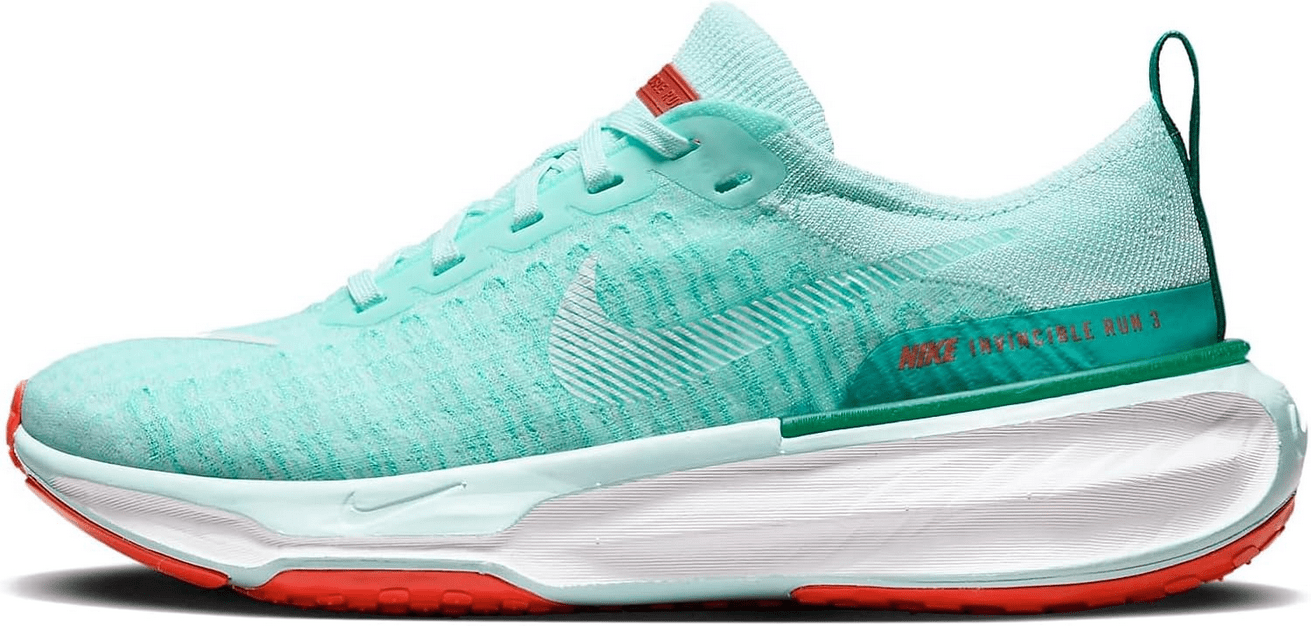
For those who prioritize a plush ride, the Nike Invincible 3 delivers maximum cushioning that cradles every step. It's like running on clouds – ideal for heavy runners seeking luxurious comfort while pounding the pavement or hitting the trails.
Features & Description (Nike Invincible 3)
The Nike Invincible 3 stands out as a top choice for heavy men who run. This shoe features a roomy toe box and a cushioned midsole that absorbs shock with each step. Its soft foam provides comfort that lasts, even on long runs.
The durable design means these shoes will support you mile after mile.
This model also boasts a secure fit to keep your foot in place, cutting down on slippage inside the shoe. It's built with a breathable upper to keep your feet cool and comfy. Plus-size runners will appreciate the added arch support that caters to their needs on the track or pavement.
Next up, let's weigh the pros against the cons of strapping into a pair of Nike Invincible 3 sneakers.
Pros & Cons (Nike Invincible 3)
Nike's Invincible 3 is a robust running shoe known for its max-cushioning, designed to provide ultimate comfort during long runs. It's built for those who crave a soft, pillowy feeling underfoot, which can be particularly beneficial for overweight runners. Now, let's dive into the pros and cons of this popular model.
| Pros | Cons |
|---|---|
| Exceptional cushioning provides high-level impact protection for joints. | May not offer the tightest fit, potentially leading to stability issues. |
| Responsive foam technology aids in energetic strides. | Some runners might find the shoe too soft for speed work. |
| The durable outsole handles long distances well. | Heavier weight might not appeal to those seeking a lighter shoe. |
| Breathable upper ensures comfort even on warmer days. | Sizing discrepancies can make finding the perfect fit a challenge. |
| The wide base offers stability for runners with broader feet. | Color options might not satisfy all style preferences. |
Navigating the world of running shoes can be complex, but understanding the specific features that benefit overweight runners simplifies the process. With the Nike Invincible 3's pros and cons in mind, decision-making becomes clearer. Moving on, let's explore another option tailor-made for marathon enthusiasts.
See Special Pricing
------------------------------------------------------------------------------------------------------------------------------------
Nike Mens Zoom Fly 4 Trainer Gym Running Shoes
Elevate your running experience with the Nike Zoom Fly 4 Trainer, a cutting-edge athletic shoe designed for peak performance. Whether you're hitting the gym or pounding the pavement, these shoes are engineered to propel you forward with every stride.
Pros:
-
Responsive Zoom Air Cushioning: Experience unparalleled comfort and energy return with Nike's Zoom Air technology. The responsive cushioning in the forefoot provides a spring-like feel, making each step dynamic and efficient.
-
Lightweight and Breathable: The Zoom Fly 4 features a lightweight mesh upper that promotes optimal breathability, keeping your feet cool and comfortable during intense workouts or long runs.
-
Stability and Support: Enjoy a secure and stable fit with the dynamic support features of the shoe. The midfoot shank provides added stability, while the padded collar and cushioned insole ensure a snug and supportive feel.
-
Sleek Aesthetic: Not just a performance powerhouse, the Zoom Fly 4 boasts a sleek and modern design. Stand out during your workouts with a shoe that combines style and functionality.
Cons:
-
Narrow Fit: Some users with wider feet may find the shoe to be slightly narrow. Consider trying on a pair to ensure the right fit for your foot shape.
-
Limited Color Options: While the design is sleek, the available color options may be somewhat limited. More variety in color choices could cater to different style preferences.
-
Breaking-In Period: A few customers noted a short breaking-in period, where the shoe takes some time to conform to the foot. This is common with many performance running shoes.
Customer Reviews:
John - ⭐⭐⭐⭐⭐ (5/5) "Absolutely love these shoes! The Zoom Air cushioning is a game-changer for my runs. Lightweight, comfortable, and the sleek design is a bonus. Highly recommend!"
Emma - ⭐⭐⭐⭐ (4/5) "Great for my gym sessions! The stability is on point, but they felt a bit narrow initially. Once broken in, they became my go-to trainers. Stylish too!"
Mike - ⭐⭐⭐ (3/5) "Good overall, but wished there were more color options. Also, took a bit of time to get used to the fit. Solid shoe for running, though."
The Nike Men's Zoom Fly 4 Trainer is a fusion of innovation and style, perfect for those who demand performance without compromising on looks. Lace up and experience the next level of running technology.
See Special Pricing
-------------------------------------------------------------------------------------------------------------------------------------
Asics Superblast: Versatile for Long-Runs
The Asics Superblast isn't just a shoe; it's your reliable partner for those extended jaunts, where comfort meets endurance on the long and winding road. Its smart design caters to the unique demands of heavier runners who refuse to compromise on performance during their longer runs.
Features & Description (Asics Superblast)
Asics Superblast shoes are built for long runs and offer versatile performance. They come with a gel technology that provides exceptional shock absorption, keeping your feet comfortable mile after mile.
The shoe's wide toe box gives plenty of room for larger feet, preventing any cramping or discomfort. Its breathable material helps keep your feet cool even on hot days.
These shoes have a durable outsole that stands up to heavy impact, making them ideal for heavyweight runners who need extra support. With maximum cushioning and a supportive platform, they help protect joints from the stresses of running.
Asics Superblast also features an advanced stability system designed to control pronation, reducing the risk of injury over time. Whether you're jogging around the block or training for a marathon, these shoes will keep you going strong without weighing you down.
Pros & Cons (Asics Superblast)
After exploring the features of the Asics Superblast, let's delve into its advantages and potential drawbacks. The shoe shines with excellent cushioning and support that make long runs more comfortable. This is great for overweight runners who need extra stability during their workouts. The shock-absorbing midsoles help protect joints from high-impact movements, making them a solid choice for those prioritizing joint protection.
However, there are some considerations to keep in mind. Runners with larger feet might find the Asics Superblast too narrow, as they may not be well-suited for extra wide running shoe needs. Also, you might need to size up since these sneakers tend to run smaller than other models. It's important to try them on or check sizing charts carefully before buying to ensure a good fit for your plus-size athletic footwear needs.
See Special Pricing
How We Evaluate and Test the Shoes
We take shoe testing seriously because the right pair can make a huge difference for overweight runners. First, we do a deep dive into the shoe's features — looking at stability, cushioning, and durability.
Then, we put each pair through real-world runs. This means pounding pavement and hitting trails to see how they hold up under stress. Our testers are heavy runners themselves, so they know what to look for in maximum support running shoes.
Our process includes checking the wide toe box for comfort and evaluating the midsoles’ shock absorption ability on high-impact runs. We also wear them on long distances to test endurance over time and on multiple terrains for traction reliability.
It's all about finding that perfect balance between comfort, performance, and longevity in heavyweight runner footwear. Next up: answering common questions about these types of shoes!
Common Questions about Running Shoes for Overweight Runners
Overweight runners often have questions about finding the right shoes. Here are some answers to common concerns:
- How often should overweight runners replace their shoes? Overweight runners should get new Nike running shoes every 300-500 miles or every 6-8 months to keep good cushioning and support.
- What type of cushioning is best for heavy runners? Look for shoes with ample cushioning that can absorb high impact, such as gel technology or shock-absorbing midsoles.
- Do I need special insoles if I'm a plus-size runner? Yes, supportive insoles customize the fit and add extra support for your feet; they're great for runners carrying more weight.
- Are stability running shoes better for heavy individuals? Stability running shoes provide support to prevent overpronation and maintain proper foot alignment, which can be especially helpful for larger runners.
- What's important about a shoe's midsole? A strong, firm midsole supports weight-bearing and helps control foot movement during runs.
- Is it necessary to have motion control features in my running shoes? Motion control helps balance your gait if you heavily pronate. This means better stability when you run.
- Should overweight male runners consider wide-toe box shoes? Yes, wide-toe box shoes offer more room, reduce blisters, and give toes space to spread out upon landing.
Conclusion
Finding the right shoes can make all the difference for larger runners. Remember to seek out great support, cushioning, and durability. Don't forget to check fit and keep breathability in mind.
Happy feet mean happy miles – so choose wisely for ultimate running joy! Keep running strong and comfortable with the perfect pair by your side.
FAQs
1. What kind of shoes should overweight runners look for?
Overweight runners should search for shoes that offer good arch support, pronation control, and weight-bearing support – like motion control or stability shoes with plenty of cushioning.
2. Why is cushioning important in running shoes for heavy individuals?
Thick cushioning absorbs shock and reduces the impact on joints, making it easier to run comfortably. Look especially for gel technology or dual-density midsoles in your running shoe reviews.
3. Can gait analysis help bigger runners find the right shoes?
Absolutely! Gait analysis checks how you walk or run and can guide you to the perfect pair of arch-stability running shoes suited to overpronation or supination based on your foot's movement.
4. What features make a comfortable plus-size running shoe?
For ultimate comfort, go for breathable materials, supportive heel counters, extra cushioned insoles, and a correct balance between stability and padding—tailored just right for larger feet!
5. Are there specific brands that cater to heavy runners' needs?
Yes indeed — some brands are known for their high-performance designs serving up lightweight yet durable options ideal for heavyweight joggers looking out not just for fit but also performance.
6. How do I ensure my overweight runner shoes last long while providing enough support?
Seek out high-quality materials geared towards durability; think water-resistant exteriors coupled with reinforced stitching — ensuring both long-lasting wear and relentless joint protection during those runs.
DISCLAIMER
The information contained on Save on Sneaks and our related pages is provided for entertainment and informational purposes only. It is not intended as a substitute for the advice of or treatment that may be prescribed by your physician or other health care provider.
Understand that you are solely responsible for the way this information is perceived and utilized, and do so at your own risk. In no way will Save on Sneaks be responsible for injuries or other problems that might occur due to the use of this website or any actions taken based on the content of this website. Save on Sneaks will not be held responsible for the conduct of any companies and web sites recommended within this site.
Before adhering to any of the information or recommendations or undertaking any exercise program or diet regimen, you should consult your physician.
